Anaesthetic Violence
Ian Alan Paul
Part II of Ian Alan Paul's analysis of death and datapower in Palestine. Part I, entitled “Between the Sea and the Security Fence,” can be found here.
Other languages: Türkçe, Polski, 日本語
In his essay “Freedom of Speech, Freedom of Noise,” the artist Yazan Khalili recalls gathering with friends in a city in the West Bank to paint some graffiti mocking the Palestinian Authority’s security collaboration with Israel.1 After police officers from the Palestinian Authority approached and instructed them that it was prohibited to paint there, Khalili found that:
The Israeli-built Wall outside the city, on the way to Jerusalem, became the only space where it was possible to draw political graffiti. The Israelis allowed Palestinians to draw whatever they wanted on the wall, as long as it was on the Palestinian side … Drawing anything on the Israeli side, however, was strictly prohibited.
This partitioning of land that also functions as a partitioning of the sensible is taken up by Khalili as a point of departure to examine the colonial policing of who and what can appear and where, of what is heard as speech or disregarded as noise, of what is permitted to make sense or is barred from doing so. Drawing upon the work of Jacques Rancière, Khalili’s essay helps us understand how this sensual policing of places and people organizes life across Palestine, allowing one person to smoothly blend into the scenery of Jerusalem’s old city while another sticks out and is subjected to interrogation and arrest, one group chanting on the streets of Haifa to loudly demonstrate while another is bludgeoned and dispersed, and one driver to freely pass through a checkpoint at the edge of Bethlehem while another is stopped and searched. All of these forms of policing are built upon what Rancière describes as an aesthetics that rests at the foundation of social life, a sensible distribution that establishes and enforces who belongs where and for what purpose.2
The aesthetic policing of Palestine functions to help establish Israel’s colonial archē, its hierarchical order within which lives are compelled to play their assigned parts and keep to their assigned places. This policing operates on the lower frequencies of everyday life, as when a Palestinian is told to hand over their phone each morning at the entrance of an Israeli settlement so they cannot photograph the farm they are paid to pick fruit at, but also operates at more punctuated intensities, as when a Palestinian walking across Hebron is stopped by Israeli soldiers and told matter of factly: “Only Jews walk here.”3 In this way, the colonial administration of the sensible polices who has a part, how this taking part is socially distributed, and what form this participation may take or not take. What we call common sense is nothing other than the sensual order of the police, the checkpoints and watchtowers installed at the limits of experience and perception, the aesthetic administration that contours and cuts across social life.

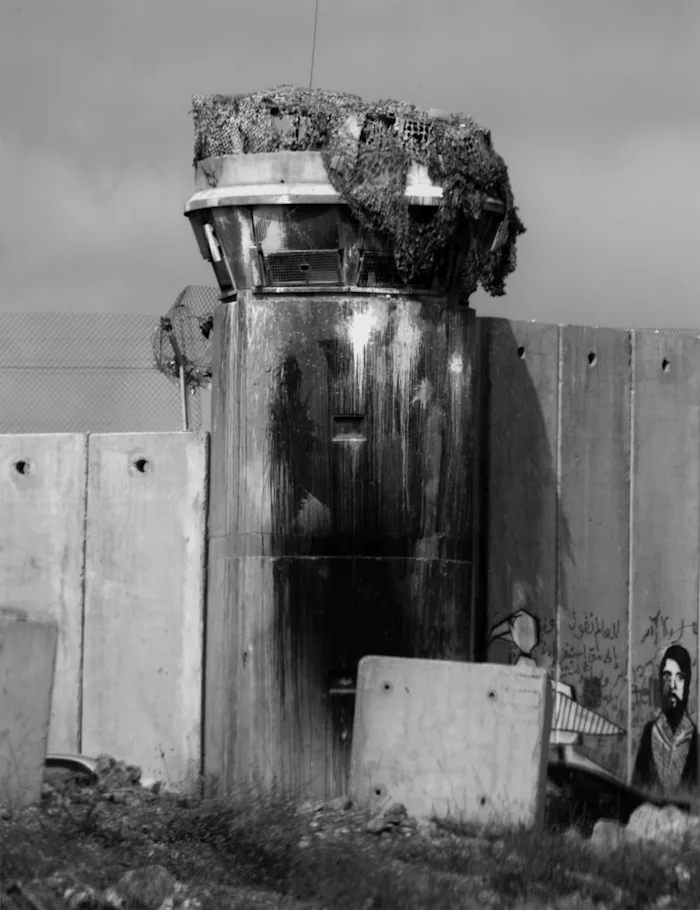
Within this distribution of the sensible, Rancière argues that the only truly political response is to oppose and combat these forms of policing. Politics in this way always arises as an anarchy that underlies and threatens all archē, an unruly disorder that always moves to break apart and transform the aesthetic order.4 Governments, political parties, demonstrations, strikes, and even revolutions in this way all fail to be political if they fail to challenge the already established aesthetic terrain, working only to shuffle around and rearrange the hierarchy and order of its given parts. Within this aesthetic framing, both the Israeli state and the Palestinian Authority are entirely apolitical, serving only to reproduce and recalibrate the partitioning logic of the occupation, operating indistinguishably from the operations of the police. Politics for Rancière ultimately arises only when those who have been discounted and have no part come to initiate their own count and take their own part — a worker realizes themselves as proletarian, a woman as a feminist, the colonized as a people, etc. — interrupting the distribution of the sensible and forcing a new distribution into being. On one side are the police who encode and enforce society’s archē; on the other is the political anarchy that always threatens to disrupt and reset the aesthetic administration of the social order.
While Rancière’s approach has been widely deployed to theorize everything from class struggle to domestic life to contemporary art, the limits of his project reveal themselves when confronted with the ongoing genocide in Palestine.5 As Israel maintains its apartheid across Palestine and intensifies its desolation of Gaza it becomes ever more apparent that the colonial and social order is built not only upon the aesthetic, a policing of lives that determines who has a part and participates, but also upon what I call the anaesthetic, a policing of lives that shapes not their participation but their eradication.
Anaesthetic violence counts lives ever more exactly only so it can ever more precisely calculate their devastation. It assigns parts to lives, but only so they can partake in its expansive purge. It renders lives ever more visible, but only so it can disappear them more completely. The anaesthetic is the formal inversion of the aesthetic, allocating and administering parts not as a means of giving form to any archē or order but rather of laying waste to the anarchic and disordered. While the aesthetic produces and maintains its own internal count and distribution of parts, and in so doing exposes itself to the supplement of what fails to count or participate, the anaesthetic instead turns towards the supplementary in order to formally envelop and then extinguish it, always adhering to its essentially hostile formal logic: sense and destroy. Unfolding as complementary dimensions of the capitalist and colonial order, the aesthetic administers life and the anaesthetic annihilates it.
The sharpened carnage of Israel’s anaesthetic violence circulates most profusely through a panoply of digital technologies, carrying the colonial project forward by bringing ever more networked waves of ruin down upon the colonized. Israel prides itself on its advanced surveillance technologies, which aspire to document and informatically capture each and every particle of the territories it occupies, aiming to informatically integrate and thus make sense of what it desolates within its colonial apparatuses. Drones circle above neighborhoods and stream footage, checkpoints are densely outfitted with facial recognition technologies, and cell phone locations and conversations are ubiquitously tracked, and yet all of this surveillance is undertaken only as part of a colonial project which aspires to erase what it inscribes in such detail, bringing its genocidal destruction down upon what it renders sensible.6 In Palestine, it is precisely the dominated who are most clearly heard and seen by those who dominate, who are most thoroughly documented, surveilled, and sensed, who are subjected to an anaesthetic violence which assigns them their own place and part in their ongoing genocide.
While the aesthetic functions as a police order opposed by politics, the anaesthetic works instead as a politics of the police, as an archē that takes anarchy as the object to be accounted for and partitioned within its modes of purging violence. In aesthetic regimes numbers are printed on ID cards and stored in databases as a means of tracking and allocating the biopolitical coordinates of all of those lives who have a part in society, while in anaesthetic regimes numbers are inscribed on arms and rendered on top of drone footage as a means of informing the various machineries of death ceaselessly at work.7 The shift from the aesthetic to the anaesthetic here marks the shift from a logic of addition to a logic of subtraction, from a count that adds and integrates lives within a social distribution to a count that subtracts and removes lives from existence. The anaesthetic in this way relies upon the mathematics of deduction, a parallel process of negative counting that sets things aside in order to allocate and assign violence particularly upon the supplementary.8 As the so-called international community argues over the correct quantity of proportional violence, what they actually aspire to decide is the correct proportion of aesthetic and anaesthetic violence, the correct balance of what, for Palestinians, is apartheid and genocide.9
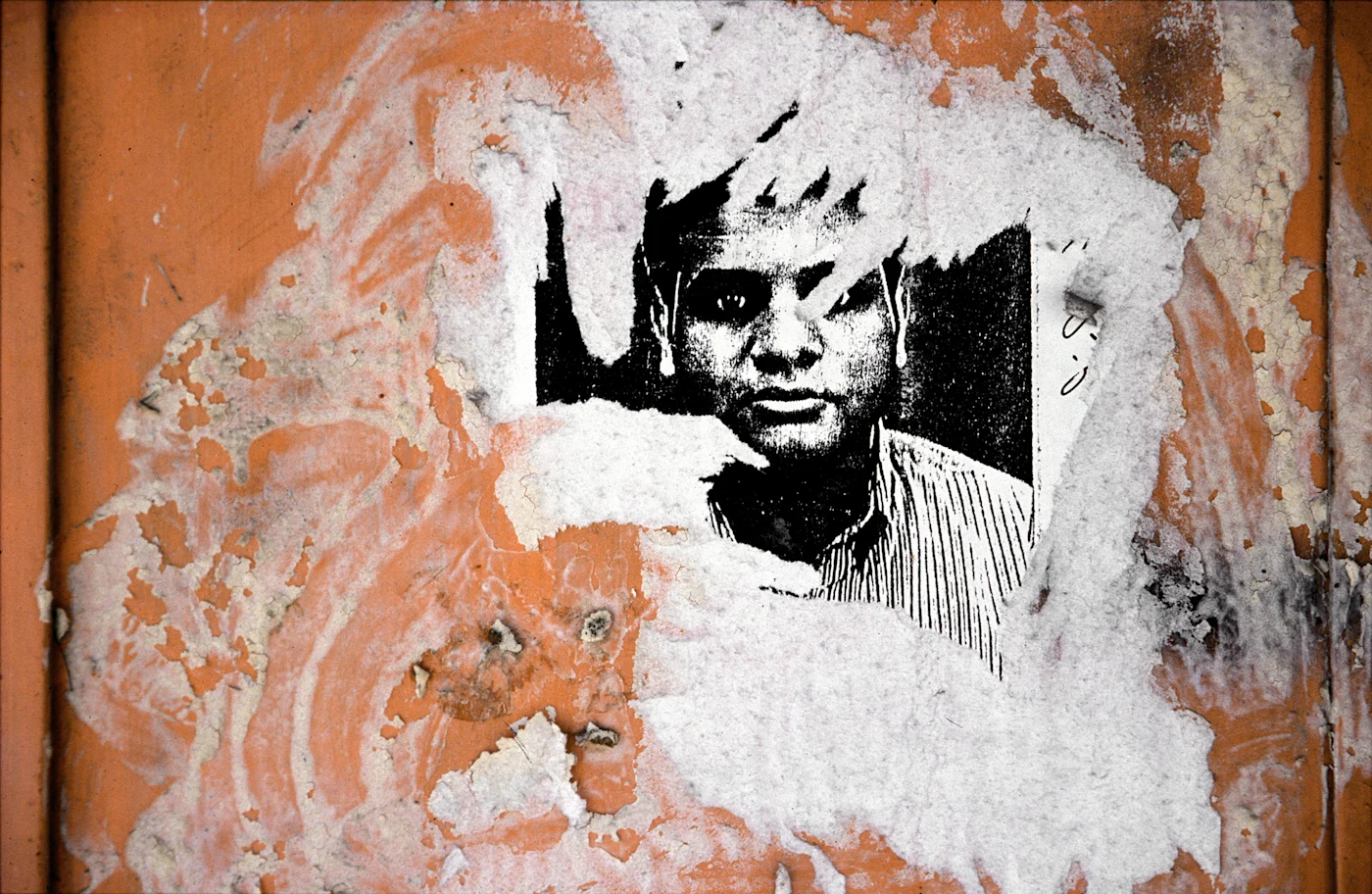
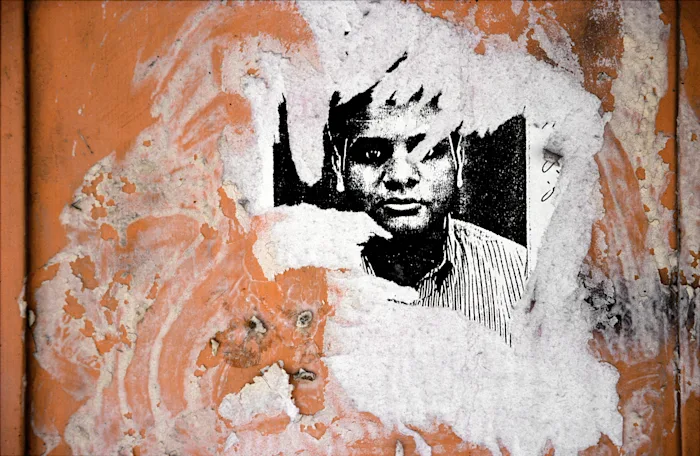
Israel’s anaesthetic assault on Palestine now counts and partitions life principally as data, an abstract development which allows its genocide to be increasingly automated. In an article published by +972 Magazine, sources inside of the Israeli military describe how the militarized devastation of Gaza has relied upon a system known as Habsora (The Gospel), an artificial intelligence technology which “processes enormous amounts of data that ‘tens of thousands of intelligence officers could not process,’ and recommends bombing sites in real time.”10 The digitized surveillance apparatuses deployed across Palestine in this way produce voluminous quantities of data about each and every Palestinian life, all of which is fed into this “mass assassination factory” through which “the military can generate new targets at a faster rate than it attacks” and “the number of civilians who are likely to be killed is…calculated and known in advance to the army’s intelligence units.”11 While the Israeli military claims to exclusively target members of Hamas and calls the murdered civilians collateral damage, what the use of these technologies reveals is that all of the dead have been accounted for before the killing has begun, each life has been assigned their appropriate part within the digitized technologies that sense and then steer bombs towards them. Within the anaesthetic regime, collateral deaths are collated within a computational apparatus in which lives are counted, then calculated, then killed.
As bombs were already falling, but before the ground invasion had begun, Palestinians were ordered to evacuate to the southern half of Gaza by the Israeli military who used drones to drop masses of leaflets warning of the violence to come. Those who chose to flee in hopes of surviving this continuation of the Nakba, packing up their things and rapidly abandoning their homes, found themselves forced to pass through shipping containers equipped with surveillance technologies installed along the evacuation route so their faces could be checked against Israel’s biometric databases, an apparatus designed to sift and sort through the displaced for additional targets to be eliminated.12 Once people began arriving in southern Gaza, they had new leaflets dropped on them which linked to an online map which divided Gaza in a grid of numbered cells so the IDF could order evacuations and conduct operations at a more particularized scale, transforming the terrain into a space which could be anaesthetically recalibrated into kill zones as desired.13 It is not enough to force a people to flee from where they live, to make them cower beneath snipers’ bullets and the shells of tanks, to instruct them that neither hospitals nor schools are safe, or to bury them within thick layers of burning dust and rubble. Nor is it enough to starve them and shut off their water, to cut electricity and communications, or to blockade the entire territory causing such severe shortages that emergency amputations and surgeries have to be performed without the use of medical anesthetics.14 The anaesthetic logic of genocide not only demands that life endure all of this, it also demands that life be documented, partitioned, and accounted for as it is being extinguished, that both life and its killing be made sensible.
This sensual partitioning of the carnage is anaesthetically reflected in the aftermath of the massive bombardments and ground incursions, when the survivors are expected to produce detailed evidence of their own annihilation for global audiences. As this recursive expression of the anaesthetic takes hold of the situation, having your neighborhood mapped by satellites and filmed by drones and then turned to rubble is only the first step of a process which then compels the ruins and death and destruction to be documented and circulated online. Life and death come to make sense only as data points within a military campaign, only as violent blips to be recognized and registered within the same genocidal apparatus that effectuates them. Israel at once holds up its own desolation as proof of its success, while telling those who survive amidst the rubble that they in fact had bombed themselves, reducing the situation to a form of evidence that reveals only the “progress” of the genocide, and nothing more. To become a witness within this anaesthetic contextis to find oneself condemned to play the role of a police witness, submitting the lives and deaths of those around you to the interrogation and verification of those forces who accumulate evidence only as spectacular trophies of their own genocidal triumph, a morbid pride that is performatively on display as groups of Israeli soldiers smile and snap selfies as Palestinian neighborhoods are bombed in the background behind them.
The anaesthetic ultimately comes to resemble something closer to its colloquial usage here, first working as a sensing that destroys before culminating in the destruction of sense. When a bomb detonates within a residential building in Gaza, it does more than blast apart the roof that had sheltered the interior from the weather and sky, disintegrate the walls that had separated a kitchen from a bedroom, a library from a nursery, or a shower from a garden, and bury the building’s inhabitants beneath avalanches of debris. A bomb also functions as a form of sense destroying violence — exploding any sense of inside or out, known or unknown, familiar or strange — crumbling buildings and bodies together into heaps of rubble and flesh which resist being categorized much less comprehended by those who survive. The rain of Israeli bombs blast apart the differences between one place and another and between this life and that, causing those who live on to do so in states of trauma and shock, finding it no longer possible to make sense of the world that has been unmade around them. The militarized sensing of the colonial regime thus feeds into forms of violence which render the world and life itself increasingly senseless, into ruins which can no longer be neatly partitioned nor clearly perceived, into what can only be made sense of as genocide.
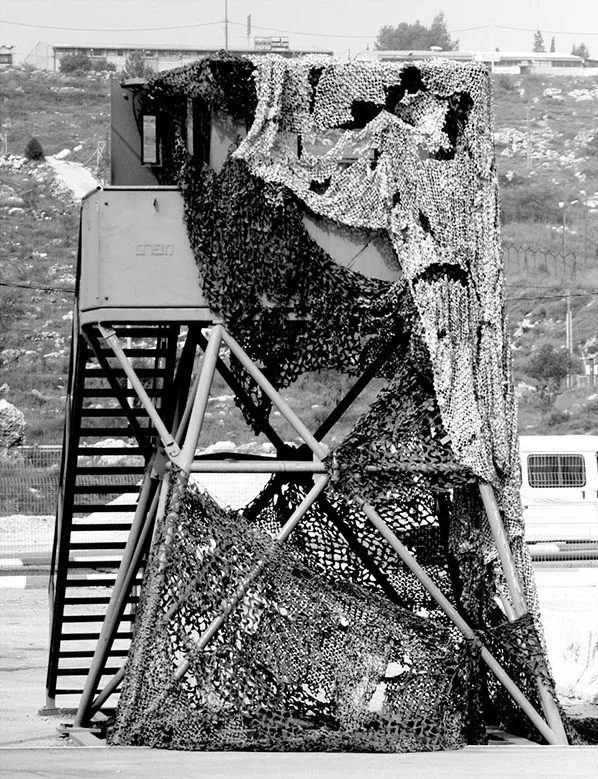
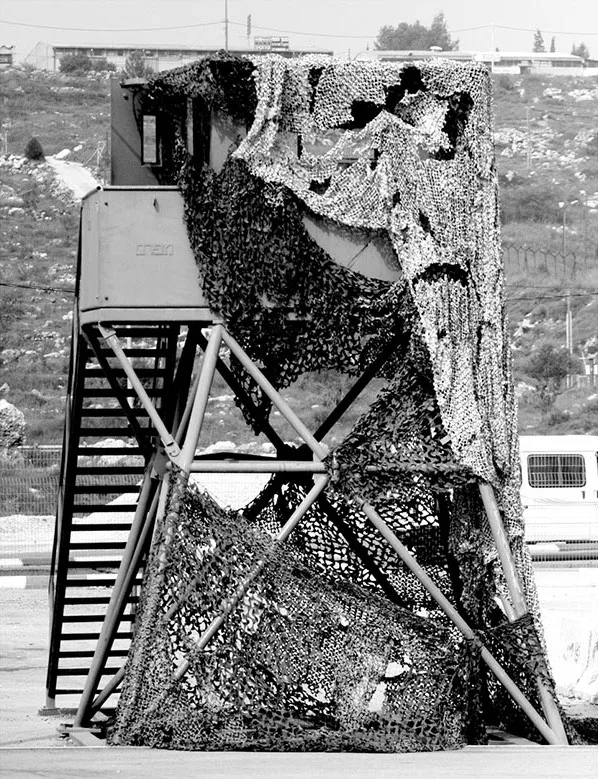
Within Israel’s anaesthetic colonial violence, Palestinian life is ultimately transformed into a disposable and discardable material, into what Achille Mbembe has called “a residual humanity that is akin to waste.”15 As the aesthetic sets the coordinates of life and the anaesthetic the coordinates of death, lives are assigned their parts in order to position them within the order of the police or dispose of them. Gaza and the West Bank come to be made sense of only as the leftovers of the colonial project, as the remnants which must be fully categorized and cataloged only so its removal can be fully confirmed and completed. The Zionist fantasy that Israel will make the desert bloom here must be reread in light of the reality that the life it dominates withers away as detritus in its wake. Within the currents of Israel’s anaesthetic violence everything is made sense of at ever higher fidelities, but only as a means of better policing and purging an increasingly colonized wasteland that expands across the surface of the world.
If the aesthetic functions as an archē that partitions and polices its anarchist foundation and the anaesthetic arises as an archē premised upon the eradication of the anarchic, what is left of anarchy itself? For Rancière, the anarchy of politics reaches its conclusion precisely when it becomes tied to the police order it aspires to confront, never realizing itself as anarchy in itself but only ever anarchically reorganizing the social order and then being reabsorbed within it.16 In this sense, Rancière sees anarchic politics as only a means of reforming and redistributing the order of the police, ultimately concluding that it is a rare occurrence which never persists beyond the policing that survives and subdues it. If we accept this tamed and restrained understanding of anarchy, we must also accept that the aesthetic and anaesthetic administration of the world is an essential part of it. Is this what life will always consist of, the choice between being policed and being eradicated?
While I was teaching courses in the West Bank city of Abu Dis, every time I arrived and departed along with the students, staff, and faculty we had to walk beside the separation wall which had been erected just on the other side of the street of the university’s entrance. The wall had been decorated with paintings of Jerusalem and of rolling blue waves, scrawled over with slogans such as كفاية (kefaya, enough), and charred in places by the various fires which had been set during the clashes with IDF patrols which periodically unfolded there. There was also a hole in the wall which had been broken open by students who had wrapped their keffiyehs into masks and used hammers to crack apart its concrete, a gap you could fit your arm through, but not much more. The hole was not part of the partition, but rather existed simply as its absence, as an opening which could be perceived and experienced only in its negativity, only because part of the colonial world had been demolished and destroyed. This negation of a part, this hole that had punctured through the distribution and administration of life, is a place where we can begin to pursue a different mode of thinking anarchy, one which might let us begin freeing it of the police order that aspires to so totally capture and constrain it.
This hole in the wall did not aspire to change the wall’s path in a more favorable or just or democratic direction, nor to aestheticize it in this or that way, but simply existed as evidence of its absence, of a world where there had once been a partition but where there was one no longer. The true beauty of the hole is found precisely in the fact that it does not have to prove or convince anyone of anything, it doesn't need to be accounted for or made sense of, nor does its existence depend upon being represented or counted, exhibited or verified, defined or demarcated. Rather, the hole is proof of itself and its reality, of an existence beyond the police, of anarchy. In the deconstruction of the constructed order, the deformalization of the colonial form, the departure from the partition, the anarchic resides. This lacuna in the architecture of power cannot be grasped, but nonetheless exists as an abolition of what aspires to grasp everything. If there is such a thing as anarchy in itself, it is found in those practices and repertoires which cannot be added to nor subtracted from but rather void the calculus of domination, which refuse the count and the part proper to all constituted power and instead create an opening in the very heart of things.17 The possibility of a Palestine which can escape its colonial devastation, which can liberate itself from the police and from the partition, persists precisely in those lives that punch holes open within the aesthetic and anaesthetic world, giving us not something to look at but through.
December 2023
Images: Taysir Batniji
Notes
1. Yazan Khalili, “Freedom of Speech, Freedom of Noise.” e-flux journal, February, 2019. Online here. ↰
2. Rancière defines the distribution of the sensible as “the system of self-evident facts of sense perception that simultaneously discloses the existence of something in common and the delimitations that define the respective parts and positions within it … This apportionment of parts and positions is based on a distribution of spaces, times, and forms of activity that determines the very manner in which something in common lends itself to participation and in what way various individuals have a part in this distribution.” (Jacques Rancière, The Politics of Aesthetics, Continuum, 2004, 12)↰
3. “Separation policy in Hebron: Military renews segregation on main street; wide part – for Jews, narrow, rough side passage – for Palestinians.” Online here. ↰
4. Against the imposed consensus of the police, Rancière argues that politics “is a specific rupture in the logic of archē. It does not simply presuppose the rupture of the ‘normal’ distribution of positions between the one who exercises power and the one subject to it. It also requires a rupture in the idea that there are dispositions ‘proper’ to such classifications.” See Jacques Rancière, “Ten Theses on Politics,” Theory & Event 5, no. 3 (2001).↰
5. Rancière’s refusal of the concept of bare life, his inability to grasp that those who are exterminated are also counted, is ultimately what marks the failure of his project. Exemplary in this regard is Rancière’s response to Agamben’s analysis of the Holocaust, where he argues that the demos must be understood not as the indeterminate site of bare life but as “the count of the uncounted — or the part of those who have no part…surplus subjects that inscribe the count of the uncounted as a supplement.” In doing so, he fails to grasp the ways in which the count of the uncounted is precisely the form which genocide takes as its object, which genocide takes as the supplement to be eliminated. See Jacques Rancière, Dissensus, Continuum, 2010, 70.↰
6. For a theorization of how these forms of sensing work as forms of abstraction in the context of Palestine, see my previous text “Between the Sea and the Security Fence.” Online here.↰
7. The writing of numbers on arms is a thread of domination which has been formally sewn throughout the 20th and 21st centuries, puncturing the surface of history in the Holocaust, in the mass repression of migrants, and presently in the ongoing assault on Gaza where Mohammed Odeh, a 14 year old Palestinian who was detained by Israeli soldiers, recalls: “‘They kept saying, ‘You are all Hamas.’ They wrote numbers on our arms. My number was 56.’ When he stretches his arms out, the red marker is still visible on his skin.” Linah Alsaafin and Maram Humaid, “‘Like we were lesser humans’: Gaza boys, men recall Israeli arrest, torture,” Al Jazeera, December 12, 2023. Online here.↰
8. Catherine Malabou notes that for Rancière aesthetic regimes involve “the distribution of entitlements to exercise power … a distribution that feigns that all parties have, or can have, their part.” (“Stop Thief!: Anarchism and Philosophy, Malabou, 190). Rancière himself defines the aesthetic supplement as arising from the count of the social, noting that while the function of the police “lies in a partition of the sensible that is characterized by the absence of void and of supplement” nonetheless this counting occurs as “the exclusion of every supplement,” a supplement which then politics can count as its own (Rancière, Dissensus, 36). The aesthetic in this sense declares and imposes itself as total, even as this totality emerges with a constitutive supplement of the uncounted, of the parts who have no part, which is what the anaesthetic counts as its own.↰
9. The logic of the count that runs through both the aesthetic and the anaesthetic can be seen clearly converging in the Roman practice of executing mutinous soldiers from which we get the word decimate, in which one in ten were killed as a means of imposing order on the remaining nine.↰
10. Yuval Abraham, “‘A mass assassination factory’: Inside Israel’s calculated bombing of Gaza,” +972 Magazine, November 30, 2023. Online here. ↰
11. Abraham, “Mass assassination factory.”↰
12. Washington Post investigative reporter Evan Hill outlined this process on twitter using contemporaneous satellite photography and video taken on the ground (see here).↰
13. Julian Borger and Ruth Michaelson, “IDF instructions on Gaza refuge zones cruel ‘mirage’, say aid agencies.” The Guardian, December 7, 2023. Online here.↰
14. Nidal Al-Mughrabi and Abir Ahmar, “Surgeon flees Gaza City's last functioning hospital after anaesthetics run out.” Reuters, November 17, 2023. Online here.↰
15. Achille Mbembe and Torbjørn Tumyr Nilsen, “Thoughts on the Planetary.” New Frame, September 5, 2019. Online here. ↰
16. Catherine Malabou identifies Rancière as a philosopher of anarchy but not as an anarchist for precisely this reason, noting that “The problem is that although Rancière asserts the heterogenous nature of politics (in the originary sense) and the police, he argues that police is nonetheless necessary. If ‘politics is specifically opposed to the police,’ police is nevertheless not viewed as the evil that a radical politics should seek to overthrow.” Rancière himself claims the same: “If politics implements a logic entirely heterogenous to that of the police, it is always bound up with the latter.” See Catherine Malabou, Stop Thief! Anarchism and Philosophy, Polity, 2023, 182.↰
17. There is still much to be learned from the theorization of anarchy as a destituent power, as “the deactivation of the technique of sovereign power that splits forms-of-life into animal/human, bare life/power, household/city, and even constituent/constituted power … a power or capacity that wrests back life’s own most possibility for assuming any form whatsoever from the truncated existence that defines us as the subject of so many dispositifs.” Hostis, “Destituent Power: An Incomplete Timeline.” Online here. ↰